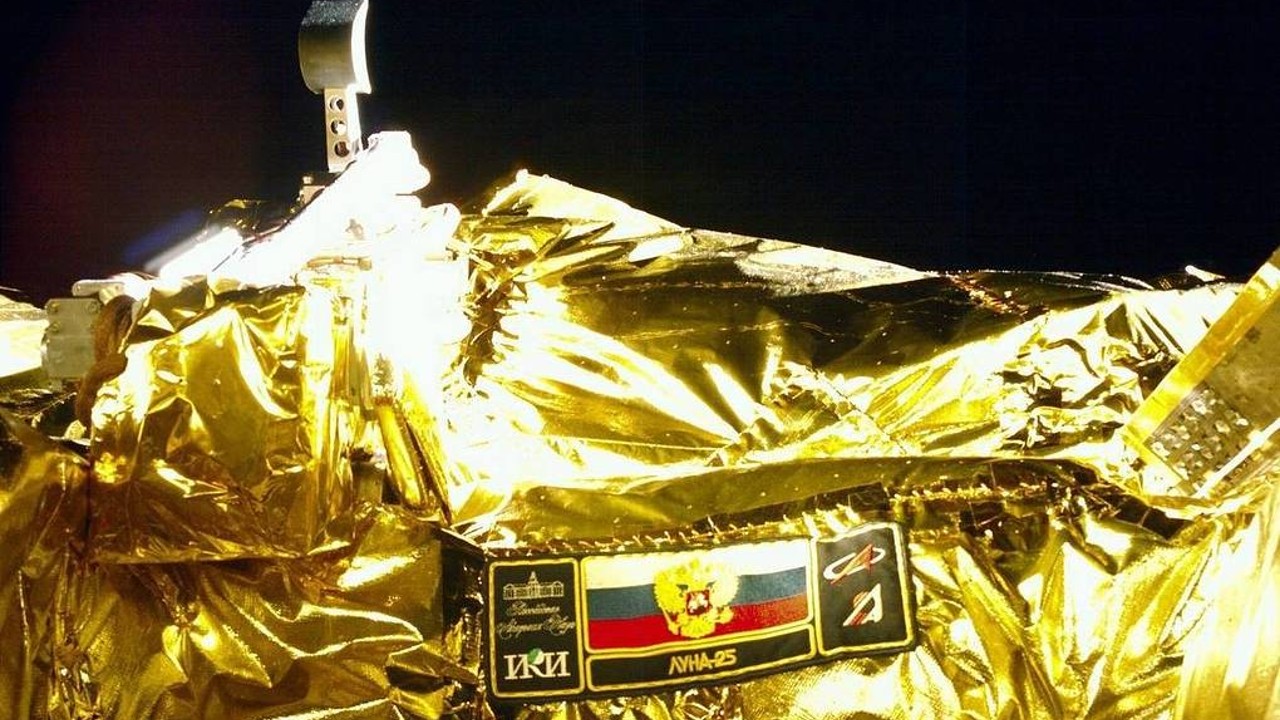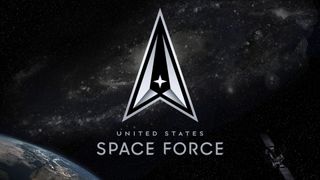
The United States Space Force was established as the sixth and newest branch of the U.S. Armed Forces on Dec. 20, 2019 when the National Defense Authorization Act was signed into law. Before that, the United States hadn’t created a new military branch since 1946, when it stood up the Air Force.
The push for a dedicated branch of the armed services devoted to the final frontier gained steam as orbital space became increasingly crowded and contested. As the United States’ critical infrastructure became increasingly dependent on satellites for communication, navigation, meteorology and intelligence, the U.S. Department of Defense likewise identified a need for a branch of the military dedicated solely to operating and protecting these assets. Thus, Space Force was created.
The service’s motto, “Semper supra,” is Latin for “Always above,” a phrase that encapsulates the Space Force’s mission. Its symbol, the Delta, signifies the service’s responsibilities and mission while honoring its long history that began long before the Space Force was created in 2019.
Related: Trump Officially Establishes US Space Force with 2020 Defense Bill Signing
Space Force history
The history of the U.S. Space Force dates back to 1954 when the U.S. Air Force created a division tasked with overseeing the U.S. military’s ballistic missiles. This division evolved several times throughout the following decades and merged with other organizations as the United States began placing more satellites in orbit for communications and early missile warning systems. In 1982, the Air Force stood up Air Force Space Command, making it the first operational space command in the U.S. Armed Forces. Air Force Space Command continued to grow from the 1980s onward as the Department of Defense (DOD) sought to consolidate its space operations.
On Dec. 20, 2019, Air Force Space Command was renamed United States Space Force and was established as an independent service when President Donald Trump signed the 2020 National Defense Authorization Actthe laws overseen by the U.S. Congress that authorize annual military expenditures. Under the structure signed into law, Space Force would be part of the U.S. Department of the Air Force, in much the same way that the United States Marine Corps is part of the U.S. Department of the Navy.
At its creation, 16,000 military and civilian personnel were assigned to the Space Force. As of January 2023, the service consists of 4,286 enlisted service members and 4,314 officers, according to the Air Force Times (opens in new tab)making it the smallest branch of the U.S. military. The U.S. Navy, by comparison, has well over 300,000 active duty members, while the U.S. Army boasts close to 500,000 active service members.
Space Force service members are known as Guardiansa name announced in a 2020 ceremony marking the service’s first anniversary. The service’s service dress uniforms were debuted in a Sept. 2021 ceremony, revealing them to be a six-button double-breasted tunic that drew comparisons (opens in new tab) to the costumes worn in the sci-fi series “Battlestar Galactica.”

(opens in new tab)
What does the Space Force do?
According to the U.S. Space Force’s mission statement (opens in new tab)the service is responsible for “organizing, training, and equipping Guardians to conduct global space operations that enhance the way our joint and coalition forces fight, while also offering decision-makers military options to achieve national objectives.”
To accomplish this mission, Space Force is organized into three main divisions: Field commands, Deltas and squadrons. The service’s three field commands are Space Operations Command (SpOC), Space Systems Command (SSC) and Space Training and Readiness Command (STARCOM). Field commands oversee broad mission goals.
Space Operations Command, for example, is responsible for providing “combat ready” space capabilities, cyber operations and intelligence in support of U.S. military operations, according to a SpOc fact sheet (opens in new tab).

(opens in new tab)
Space Systems Command, meanwhile, is responsible for the service’s development and acquisition of new space technologies and capabilities. The command’s website (opens in new tab) writes that SSC is tasked with “developing, acquiring, equipping, fielding and sustaining lethal and resilient space capabilities for warfighters.” This mission includes overseeing launch operations and on-orbit maintenance of DOD satellites and other space systems.
Space Training and Readiness Command, or STARCOM, as its name suggests, is tasked with educating and training Space Force personnel “to fight and win in a contested, degraded, and operationally limited environment through the deliberate development, education and training of space professionals; development of space warfighting doctrine, tactics, techniques, and procedures; and the test and evaluation of USSF capabilities,” according to its website (opens in new tab).
Within each field command are various Space Force Deltas. Deltas have a much more specific function, such as operations, training or facility support, according to a 2020 Space Force statement (opens in new tab). For example, Space Launch Delta 45 (opens in new tab) (SLD 45) at Cape Canaveral Space Force Station in Florida is tasked with overseeing all space launch operations from the U.S. East Coast, including from Cape Canaveral Space Force Station. SLD 45 manages the Eastern Range, a massive rocket range that stretches out over the Atlantic Ocean into the Indian Ocean, and provides launch support for the DOD, NASA and private space launch providers.
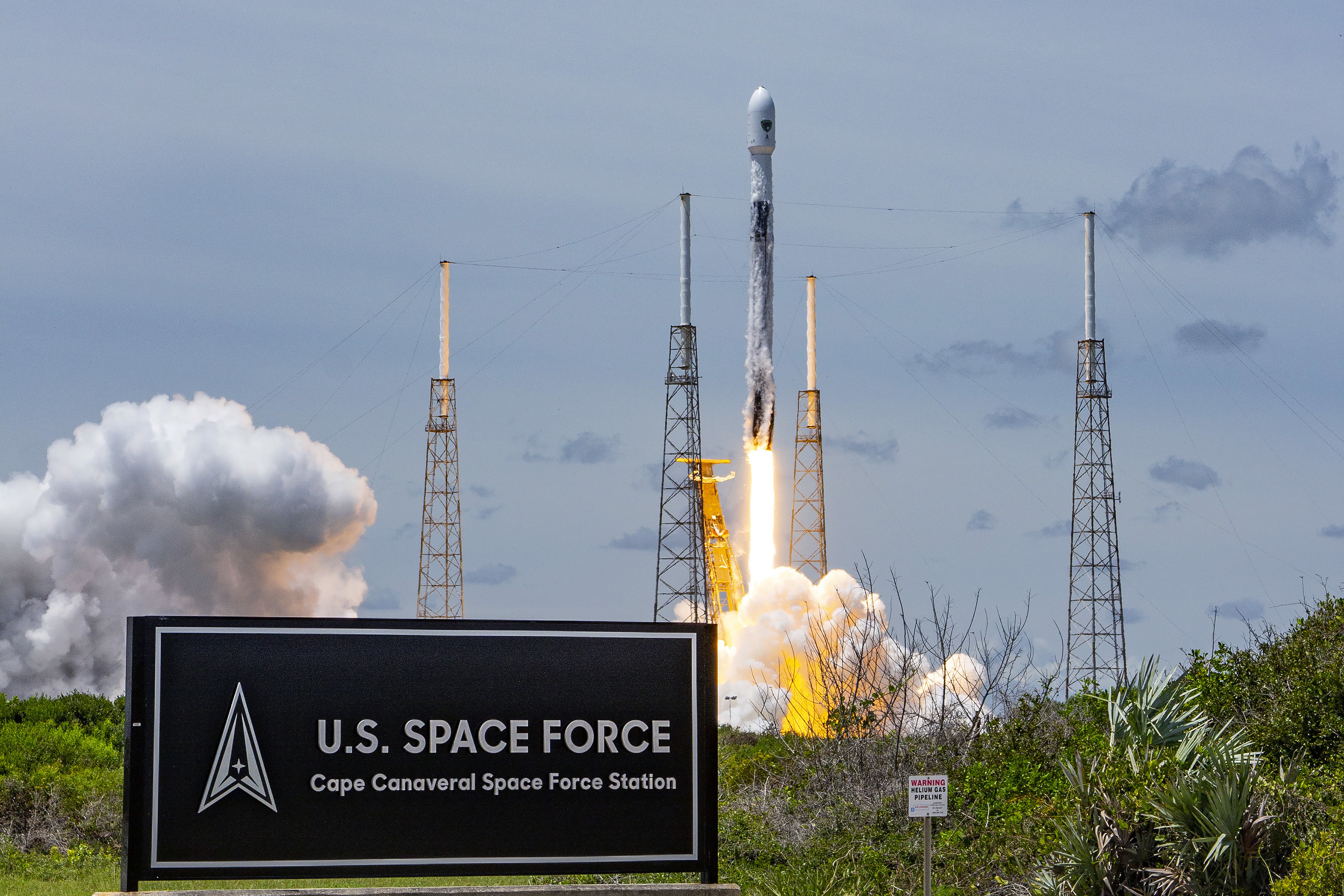
(opens in new tab)
Each Delta is further divided into squadrons, each tasked with a specific purpose that supports the overall mission of its respective field command. The 45th Weather Squadron (opens in new tab)for example, is part of Space Launch Delta 45 at Patrick Space Force Base in Florida and is responsible for performing weather observations and making forecasts in support of launch operations at Cape Canaveral Space Force Station and NASA’s Kennedy Space Center.
These squadrons, Deltas, and field commands work together to ensure that the Space Force can protect U.S. space assets as Earth orbit becomes increasingly contested. In recent decades, the United States’ peer adversaries such as China and Russia have advanced their own space capabilities to the point where U.S. satellites are under attack daily, according to U.S. Space Force Gen. David Thompson, then vice chief of space operations. Thompson told The Washington Post (opens in new tab) in 2021 that “threats are really growing and expanding every single day. And it’s really an evolution of activity that’s been happening for a long time,” adding that “we’re really at a point now where there’s a whole host of ways that our space systems can be threatened.”
More recent statements by U.S. Space Force leadership echo this same sentiment. Gen. B. Chance Saltzman, the branch’s chief of space operations, said at the Reagan National Defense Forum in Simi Valley, California in December 2022 that protecting United States capabilities in space has become one of the Pentagon’s top priorities, SpaceNews reported (opens in new tab). “The capability that space offers has demonstrated its value so much so that both sides are engaged in trying to counter those capabilities and deny those advantages to the opponent,” Saltzman said. Space is “clearly a contested domain,” he added.
The ways in which satellites and other spacecraft can be threatened or countered range from reversible, non-damaging capabilities on one end such as jamming GPS transmission or using lasers to blind satellites’ optical sensorsto the other end that includes destructive anti-satellite missilestests of which have drawn condemnation from the international community.
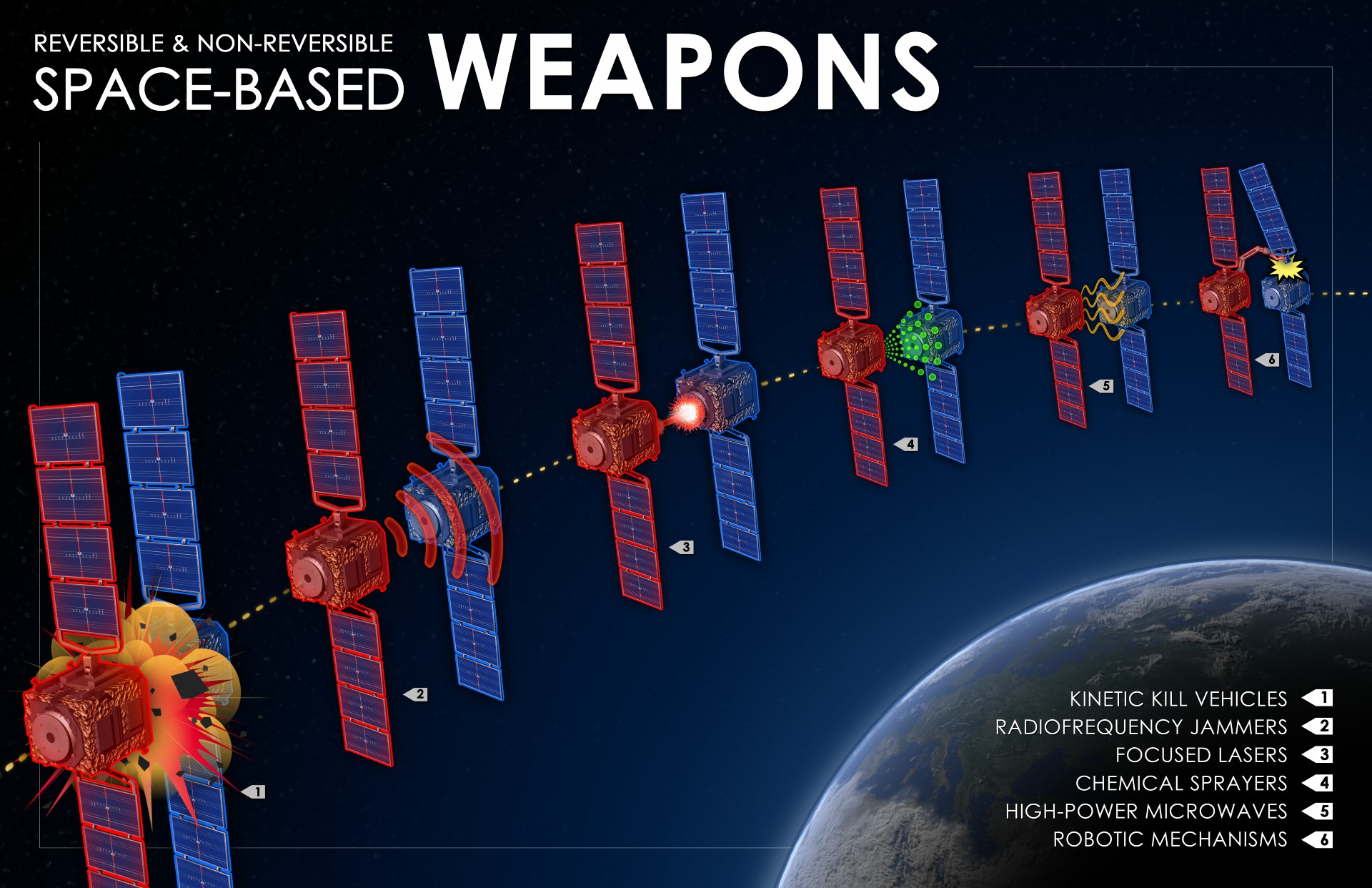
(opens in new tab)
The U.S. Space Force has units tasked with tracking these threats and engaging in “on-orbit combat,” although the exact capabilities of these units remain classified — as do many of the service’s assets and technologies.
The U.S. Space Force systems and capabilities that are unclassified and known to the public include (but are not limited to) the Global Positioning System (GPS)overseen by Space Delta 8 at Schriever Space Force Base in Colorado; the Defense Meteorological Satellite Program (opens in new tab) (DMSP) that provides weather data to the U.S. military; and a wide variety of intelligence, surveillance and missile early warning systems like the Next Generation Overhead Persistent InfraRed (opens in new tab) system (Next-Gen OPIR), Space Based Infrared System (SBIRS) program and the Space Tracking and Surveillance System. (opens in new tab)
Space Force also tracks objects from low Earth orbit all the way to deep space using a variety of ground-based sensors like the Ground-Based Electro-Optical Deep Space Surveillance (opens in new tab) (GEODSS) system.
Perhaps most well-known of all Space Force assets is the X-37Bthe Boeing-built space plane whose missions remain largely mysterious despite many high-profile long-duration flights in orbit.
Since the creation of the Space Force, the service has largely turned to commercial launch providers to loft its satellites and other assets to orbit. Since 2020, ULA and SpaceX have been the exclusive launch providers for the U.S. Space Force, although the service is looking to partner with more providers from 2023 onward, according to SpaceNews (opens in new tab).
Where are Space Force bases?
Today, U.S. Space Force operates six dedicated Space Force bases, two of which host orbital launches for the service’s many satellites and spacecr aft. These include:
- Buckley Space Force Base (opens in new tab)Aurora, Colorado
- Los Angeles Air Force Base (opens in new tab)El Segundo, Calif.
- Patrick Space Force Base (opens in new tab)Brevard County, Florida
- Peterson Space Force Base (opens in new tab)Colorado Springs, Colorado
- Schriever Space Force BaseColorado Springs, Colorado
- Vandenberg Space Force Base (opens in new tab)Santa Barbara County, California
Vandenberg Space Force Base is home to Space Launch Delta 30 (opens in new tab)which oversees the Western Range and manages launch activities for the DOD, NASA and private space firms. The Western Range stretches from the West Coast of the United States into the Indian Ocean, where it meets the Eastern Range.
In addition to these Space Force bases, the service operates eight Space Force stations, which include:
- Cape Canaveral Space Force StationCape Canaveral, Florida
- Cape Cod Space Force Station, Bourne Massachusetts
- Cavalier Space Force Station, Cavalier, North Dakota
- Cheyenne Mountain Space Force Station, Colorado Springs, Colorado
- Clear Space Force Station, Clear, Alaska
- Kaena Point Space Force Station, Honolulu County, Hawaii
- New Boston Space Force Station, New Boston, New Hampshire
- Thule Air Base, Qaanaaq, Greenland
Cape Canaveral Space Force Station is home to Space Launch Delta 45 and oversees launches for a variety of space agencies and companies, including NASA’s Kennedy Space Center. During the historic launch of NASA’s Artemis 1 mission to the moon in November 2022, for example, SLD 45oversaw radar tracking of the agency’s SLS mega moon rocket over the Eastern Range.
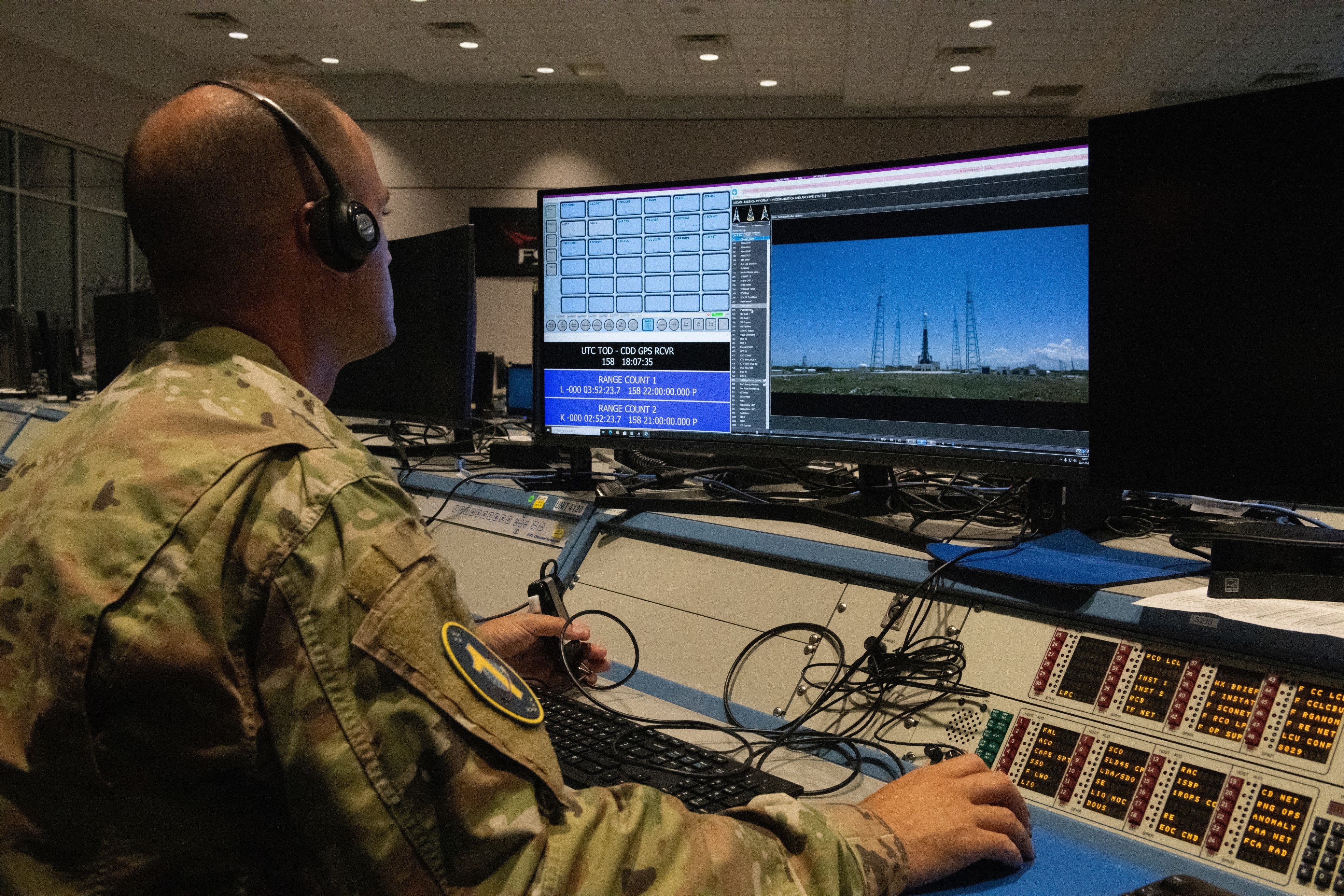
(opens in new tab)
What is the Space Force symbol?
The U.S. Space Force’s symbol is known as a delta. It’s a triangular or chevron shape featuring elements that represent the service’s mission and history.
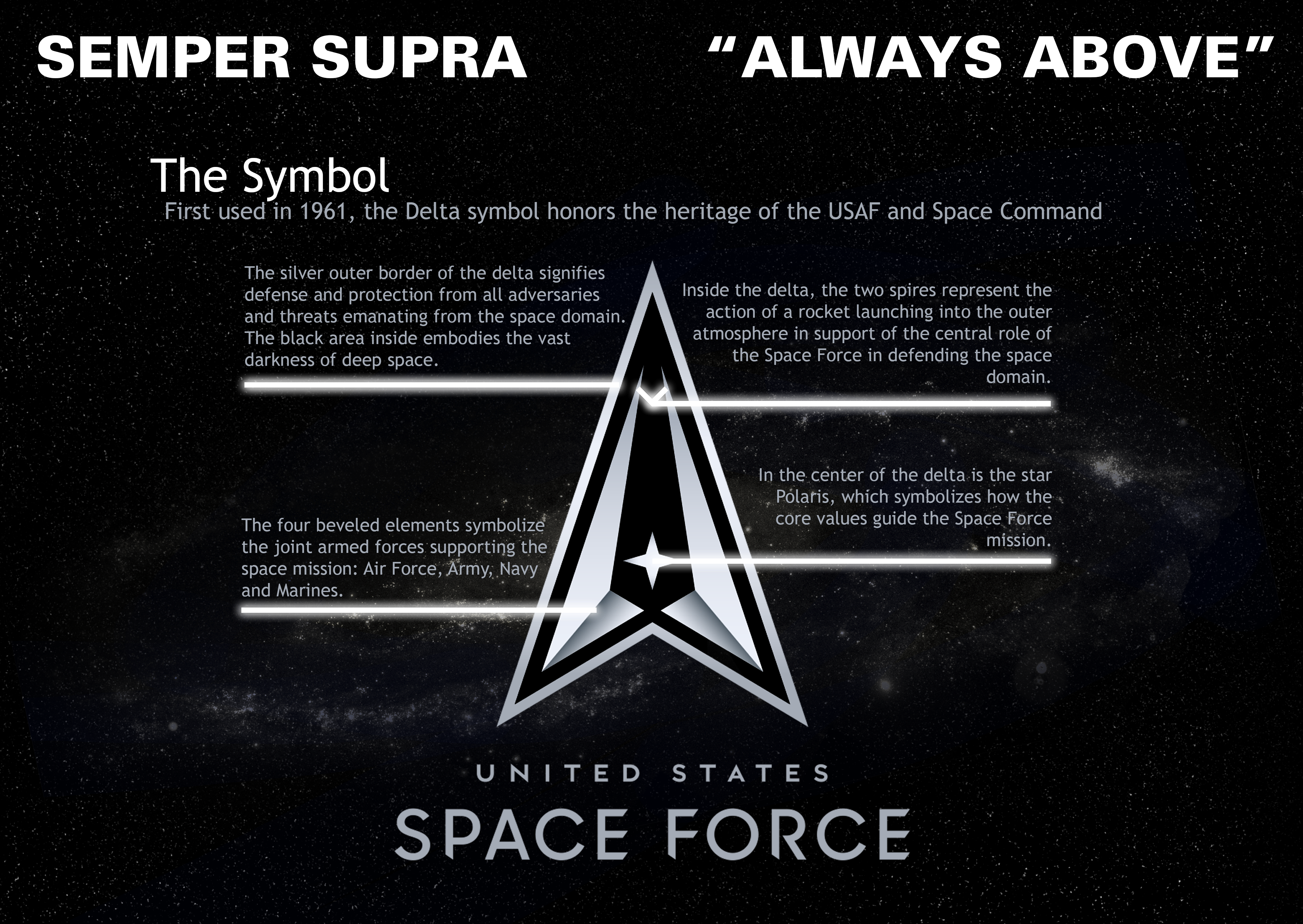
(opens in new tab)
The silver outline of the delta represents the service’s commitment to protecting U.S. space assets from adversaries and threats. In the center, a symbol representing the North Star, Polarisrepresents the core values that guide Space Force, in much the same way the North Star has guided travelers for millennia.
Alongside the North Star are four triangular elements that represent four branches of the U.S. Armed Forces: the Army, Air Force, Navy and Marines. Finally, in the top of the delta symbol are two bright lines representing a rocket launching into orbit. This element symbolizes the central role of Space Force in overseeing launch operations on behalf of the Pentagon.
Additional Resources
U.S. Space Force represents the growing role that space plays in all of humanity’s endeavors, including military operations. To learn more about the service, visit the Space Force’s official website (opens in new tab). Space Force’s many operations and facilities are explained in greater detail in a series of fact sheets (opens in new tab) hosted on the service’s website.
Bibliography
United States Space Force History, [Accessed 01/31/23]https://www.spaceforce.mil/About-Us/About-Space-Force/History/ (opens in new tab)
United States Space Force Locations, [Accessed 01/31/23]https://www.spaceforce.mil/About-Us/Space-Force-Locations/ (opens in new tab)
What’s the Space Force?, [Accessed 01/31/23]https://www.spaceforce.mil/About-Us/FAQs/Whats-the-Space-Force/ (opens in new tab)
New in 2023: Saltzman leads Space Force into its 4th year, [Accessed 01/31/23]https://www.airforcetimes.com/news/your-air-force/2023/01/03/new-in-2023-saltzman-leads-space-force-into-its-4th-year/ (opens in new tab)
Beyond Space Horizons: A Half Century of Air Force Space Leadership, [Accessed 01/31/23]https://apps.dtic.mil/sti/citations/ADA355572 (opens in new tab)
About Space Operations Command, [Accessed 01/31/23]https://www.spoc.spaceforce.mil/About-Us/About-Space-Operations-Command (opens in new tab)
About Space Systems Command, [Accessed 1/31/23]https://www.ssc.spaceforce.mil/About-Us/About-Space-Systems-Command (opens in new tab)
Space Training and Readiness Command: Who We Are, [Accessed 1/31/23]https://www.starcom.spaceforce.mil/About-Us/Who-We-Are/ (opens in new tab)
Follow Brett on Twitter at @bretttingley (opens in new tab). Follow us @Spacedotcom (opens in new tab)or on Facebook (opens in new tab) and Instagram (opens in new tab).
Join our Space Forums to keep talking space on the latest missions, night sky and more! And if you have a news tip, correction or comment, let us know at: community@space.com.
Note: This article have been indexed to our site. We do not claim legitimacy, ownership or copyright of any of the content above. To see the article at original source Click Here











